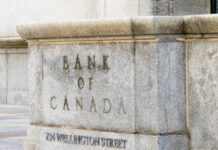Markets
The slew of eco data from the US came in mixed. February regional sentiment indicators including the Empire Manufacturing index and the Philly Fed business outlook were better than expected. Details showed improvement across almost all subseries, including 6-month forward looking gauges. We note the price gauges re-emerging. Weekly jobless claims also joined the consensus-beating side with 212k vs 220k. But US headline retail sales fell 0.8% m/m, more than the -0.2% expected. 9 out of the 13 categories posted decreases, led by building material stores and auto dealers. All core gauges fell short of the +0.2% consensus as well, with the control group (used for private consumption GDP calculations) dropping by 0.4% m/m. While the numbers may have been impacted by harsh winter weather, they dominated the market reaction. Yields were down about 1.5 bps prior to the release. Current changes vary between 4.3 (30-y) and 5.8 (5-y) bps but trade off intraday lows. German yields shrugged off the additional declines caused by US spillovers, limiting daily losses to <2 bps. Appearing before the European Parliament today, ECB’s Lagarde warned against hasty action. She suggested that it could put inflation back on the rise and force the ECB into the brakes again. Lagarde highlighted salaries as “an increasingly important driver of inflation dynamics in the coming quarters.”, adding that services inflation has shown signs of persistence. Her comments came hours before the Commission released updated economic forecasts. It slashed its 2024 GDP growth prognosis from 0.8% to just 0.5% as the economy entered the year on a weaker footing than expected. The forecast for next year was marginally revised down to 1.5%. Inflation is seen easing to 2.7% in 2024 and 2.2% in 2025.
A weaker dollar is the name of the game on FX markets. DXY slips to 104.35. Including yesterday’s move, about two-thirds of Tuesday’s CPI gain is wiped out. EUR/USD extended earlier gains after the releases to change hands in the 1.078 region (1.072 at the open). Sterling joined the Anglo-Saxon trend lower after this morning’s weaker-than-expected Q4 GDP numbers (including weak details). A two-day rally lifts EUR/GBP from the recent lows around 0.85 towards 0.856 currently. UK money markets added to rate cutting bets, even as BoE policymaker Greene said she wanted to see more evidence that inflation is less embedded than previously feared before considering to loosen policy. Greene at the latest meeting called for a stable policy rate after pushing for hikes in the ones before.News & Views
Czech inflation rose less than expected in January, by 1.5% M/M (vs 2% consensus). The usual repricing at the start of the year was thus less stronger than feared. Annual inflation fell from 6.9 Y/Y to 2.3% Y/Y, significantly beating analyst estimates (2.9%) and the Czech National Bank’s assumption (3%). The fade-out of the statistical effect of the energy savings tariff contributed to the sharp slowdown in annual inflation. Administered prices (6% Y/Y instead of 8.4% Y/Y expected by CNB), core inflation (2.9% Y/Y vs 3.8% Y/Y) and monetary policy-relevant inflation (2.2% Y/Y vs 3% Y/Y) all improved much more than hoped for. It prompted an exceptional statement by CNB governor Michl, lauding CNB staff for restoring price stability. He calls it a partial success though as the CNB needs to stay hawkish. The weakening koruna and public finance deficit are upside risks to inflation, arguing for lowering interest rates cautiously and for being able to halt the rate reduction process at any time. Michl also warns that rates will be higher than what has been the case over the last ten years or more as the CNB discusses the option of a need for higher (neutral) rates. The Czech koruna immediately lost ground after the CPI print with EUR/CZK touching 25.50 for the first time since March 2022. The pair reversed course after the Michl statement (CZK-reference unlike after last week’s CNB meeting) towards 25.40. CZK swap yields lose 8 to 15 bps across the curve, the front end outperforming.
Polish inflation accelerated less than feared as well, but the deviation from consensus was much smaller than in the Czech Republic. CPI rose by 0.4% M/M in January (vs 0.5% forecast) with Y/Y-inflation falling from 6.2% to 3.9% (vs 4.1%). Details showed amongst others dwelling prices rising by 0.8% M/M and only transport (-2.8% M/M) and fuel prices (-2.3% M/M) contributing negatively. Polish swap rates lose over 7 bps across the curve, but the biggest part of the move already occurred ahead of the CPI release. Comments by NBP Kotecki might be at play. Unlike NBP governor Glapinski, he thinks that there will be room for a slight Polish rate cut in H2 2024. The Polish zloty stands its ground at EUR/PLN 4.34.














